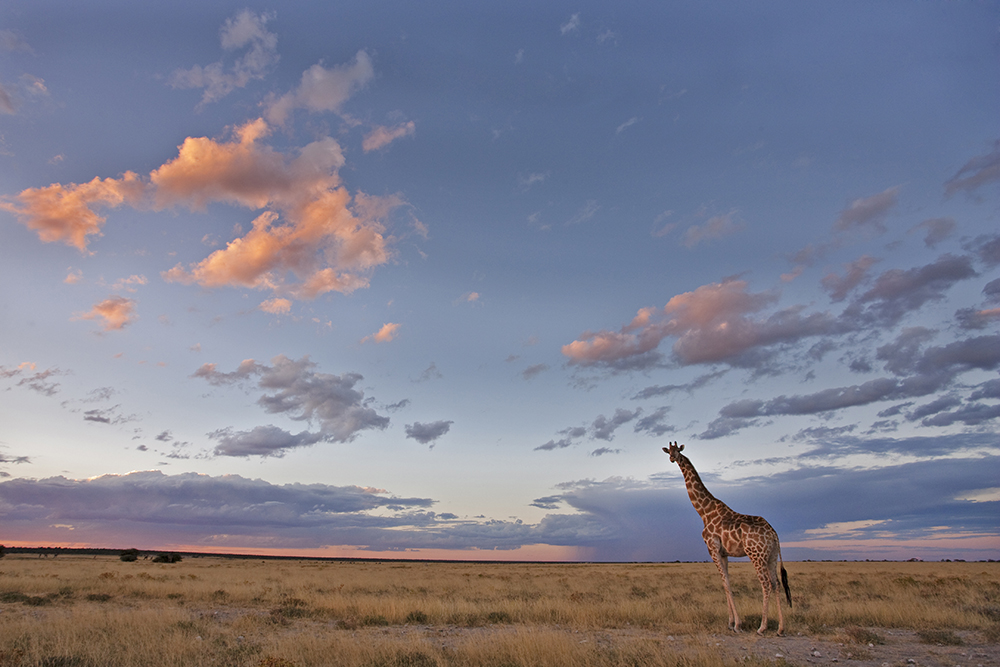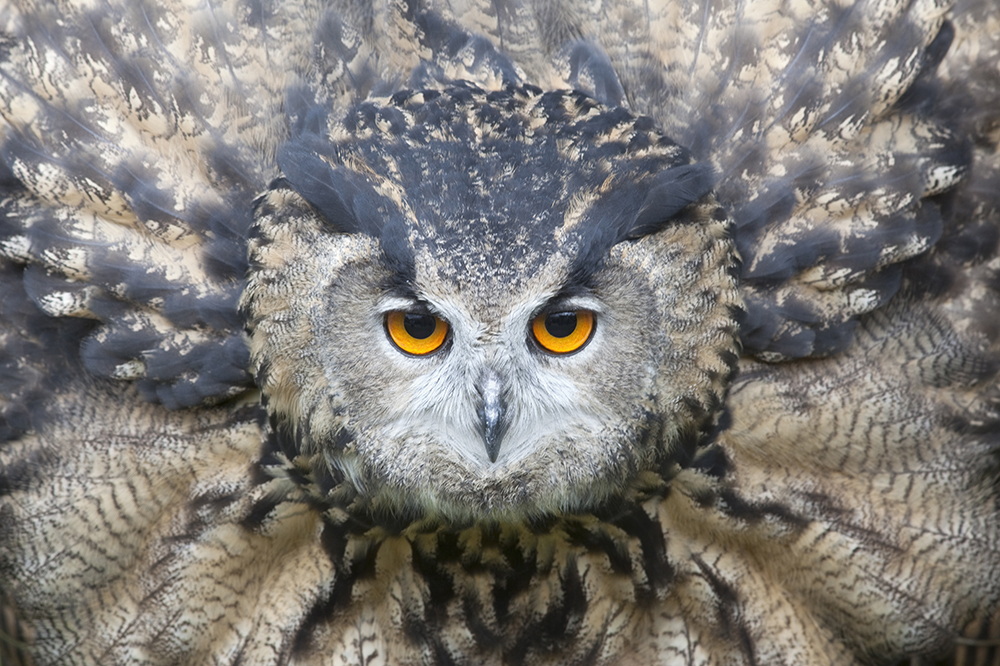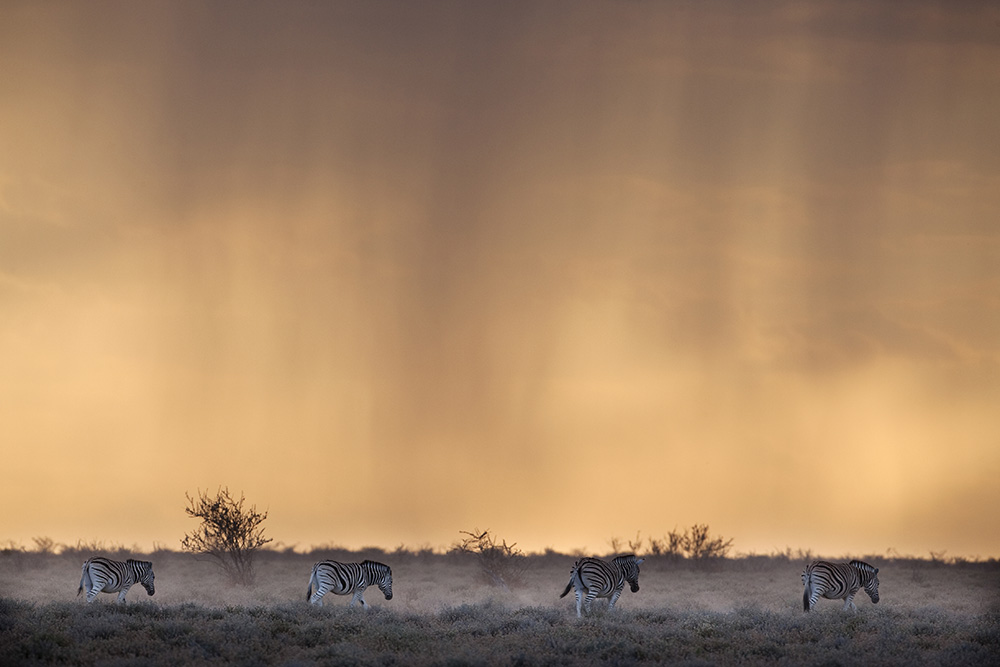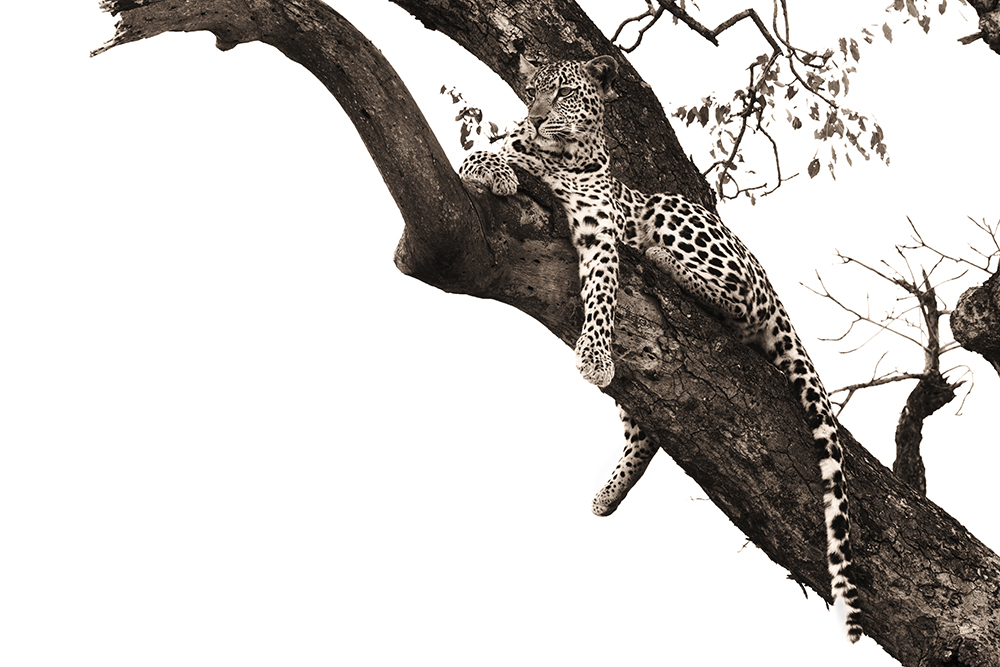In the second and final part of our two-part series on photographing wildlife, award-winning shooters Steve and Ann Toon share four more great photo tips to put you ahead of the herd.
01 THINK LANDSCAPE
When we started and had splashed our savings on long lenses we photographed everything close-up and full frame just because we could. Don’t get us wrong, such pictures can be very powerful and direct, and we still make them, but they don’t reveal a jot of information to the viewer about the habitat the subject lives in or the ecosystem it belongs to. And they don’t really capture the sense of scale of the subject or, indeed, the wilderness area it lives in.
So, as a change from frame-filling close-ups, sometimes pull back and think like a landscape photographer by locating wildlife subjects in the wider scene as thoughtfully as a landscape photographer would. For example, by placing a tree or stand of trees for maximum visual impact, you can add a rich depth to a picture. As always, photograph when the light is best and try to make the most of the skies and surrounding scenery.
Sometimes it pays to make the landscape a key feature to reveal the scale of the animal and its habitat. Canon EOS 1Ds Mark II, 17-40mm f4 lens @ 17mm, 1/60s @ f/8, ISO 250.
02 THE EYES
Whether you’re shooting a portrait of a person or an animal, strong eye contact can take your image to another level. The eyes are the first thing a viewer will engage with. You need to get them right. Eyes are such an important feature you can even make them the star of your picture. Be ready to press the shutter at the precise moment your subject is wide-eyed and alert. If your subject is momentarily distracted or sleepy, fire the shutter as the noise can alert a disinterested subject to look your way. Check for a catchlight before you fire the shutter. If you can’t see one, try shifting your position in relation to the sun and your subject. We often pass up on a subject with no catchlight as we know the resulting image will look lifeless. You can add them at the post-processing stage, but nothing beats a natural sparkle.
The eyes are the key to this photo of a European eagle owl. Canon EOS 5D Mark II, 300mm f4 lens 1/60s @ f/11, ISO 400.
Strong eye contact provides a direct link connecting the viewer of the photo to the subject. Canon EOS 5D, EF500mm f/4L IS USM with 1.4x teleconverter, 1/100s @ f/11, ISO 800.
03 BE THERE
If you learn everything you can about your subject before you leave home, it can save you hours in the field and increase your chances of getting the shots you want. Research the best locations and peak times for all your wildlife subjects, and if possible pick the brains of fellow enthusiasts or conservation experts who might be prepared to exchange helpful information with you. Luck is a rare commodity, but you can increase your chances of good fortune by putting as much as you can into your photography. The old saying 'F8 and be there' holds true. So keep a camera with you at all times when you’re out where the wild things are – just in case.
Being in the right place at the right time isn’t a given, but research and time in the field offer a better chance of striking images like this zebra herd. Canon EOS 1Ds Mark II, 500mm f4 lens, 1/400s @ f/7.1, ISO 400.
04 BREAK THE RULES
It’s good to know the basic rules of composition, lighting and colour but it’s also important to break the rules, too. Experiment, be creative and find your own visual style.
A lightning bolt won’t strike you if you veer away from the rule of thirds. A perfectly exposed misty scene may be technically correct, but may not have the same visual and emotional resonance as one which has been substantially overexposed to enhance the inherent mistiness of the scene. Similarly, you don’t always need everything in your image to be sharp – or even anything at all – if you don’t want. The French Impressionists got away with it. And there’s nothing to stop you composing a wildlife portrait with your subject completely cut in half by the edge of the frame – if you feel it will improve the aesthetics of the image or advance the story you want to tell, go for it.
The best images are not the 'me too' wildlife clichés, but the ones that dare to be different. Be bold when you veer off the straight and narrow – too tentative and you risk not pulling it off; it will look like a mistake. And always do it for a reason – not just for the hell of it.
A lightning bolt won’t strike you if you veer away from the usual conventions of photography. Be bold, experiment, shoot regularly and you will eventually find your own style. Canon EOS 5D MK II, EF500mm f/4L IS USM with 1.4x teleconverter, 1/80s @ f/11, ISO 400.








